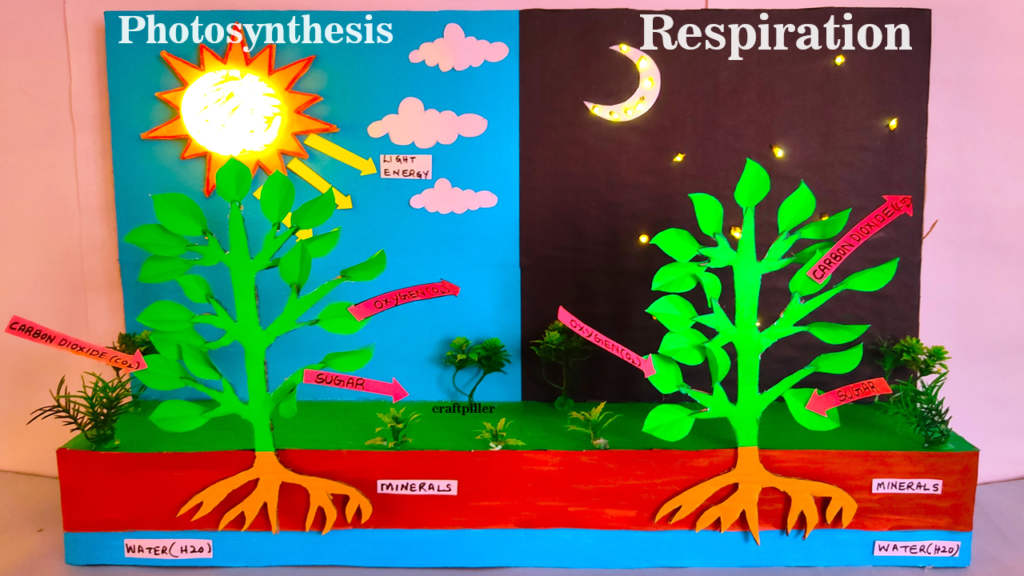Photosynthesis and respiration are two interconnected biological processes crucial for life on Earth.
Photosynthesis is the process by which green plants, algae, and some bacteria convert light energy into chemical energy. During photosynthesis, these organisms use sunlight to synthesize nutrients from carbon dioxide and water, producing glucose and releasing oxygen as a byproduct. This process occurs in the chloroplasts of plant cells, where the pigment chlorophyll absorbs light energy.
Respiration is the process by which organisms convert the chemical energy stored in glucose into usable energy in the form of ATP (adenosine triphosphate). This process occurs in the mitochondria of cells and involves the intake of oxygen and the release of carbon dioxide and water. Respiration can be aerobic (requiring oxygen) or anaerobic (without oxygen), though aerobic respiration is more efficient.
Creating a working model demonstrating photosynthesis and respiration for a science exhibition using cardboard and color paper is a great way to explain these concepts visually.

Here’s how you can make it:
Materials Needed:
- Cardboard or foam board
- Colored paper (blue, green, yellow, white, black)
- LED lights (yellow for sun, white for moon, and small serial lights for stars)
- Small motor (optional, for moving parts)
- Batteries or power supply for LEDs and motor
- Wires
- Switches (optional)
- Glue
- Scissors
- Markers
Steps by Steps video instructions :
1. Prepare the Base:
- Take a large piece of cardboard or foam board as the base for your model.
- Cut it into a square or rectangle shape.
2. Design the Sun, Moon, and Stars:
- Cut out a large circle from yellow colored paper to represent the sun. Glue it onto the top corner of the base.
- Cut out a smaller circle from white colored paper to represent the moon. Glue it onto another corner of the base, opposite to the sun.
- Use serial LED lights to create stars by attaching them in a scattered pattern across the model’s background. You can attach these lights using glue.
4. Add Plants and Trees:
- Cut out shapes of plants and trees from green colored paper.
- Glue them onto the Earth in various places.
5. Show Photosynthesis:
- Attach yellow LED lights to the plants and trees to represent sunlight.
- Connect the LED lights to a power supply or batteries. You can use a switch to control the lights.
6. Show Respiration:
- Cut out small human or animal figures from black colored paper to represent living beings.
- Attach white LED lights to these figures to represent respiration.
- Connect the LED lights to a power supply or batteries. You can use a switch to control the lights.
8. Label and Explain:
- Use markers to label the sun, moon, stars, Earth, plants, trees, and figures representing living beings.
- Write brief explanations of photosynthesis and respiration on the model.
9. Demonstrate:
- Turn on the LED lights representing the sun, moon, stars, and plants.
- Explain how photosynthesis occurs during the day when sunlight falls on plants, and respiration occurs continuously in living beings.
- Demonstrate how the Earth rotates to create day and night.
10. Display:
- Display your working model at the science exhibition where it can be easily seen by viewers.
With this model, you can effectively demonstrate the processes of photosynthesis and respiration in an engaging and interactive way.

